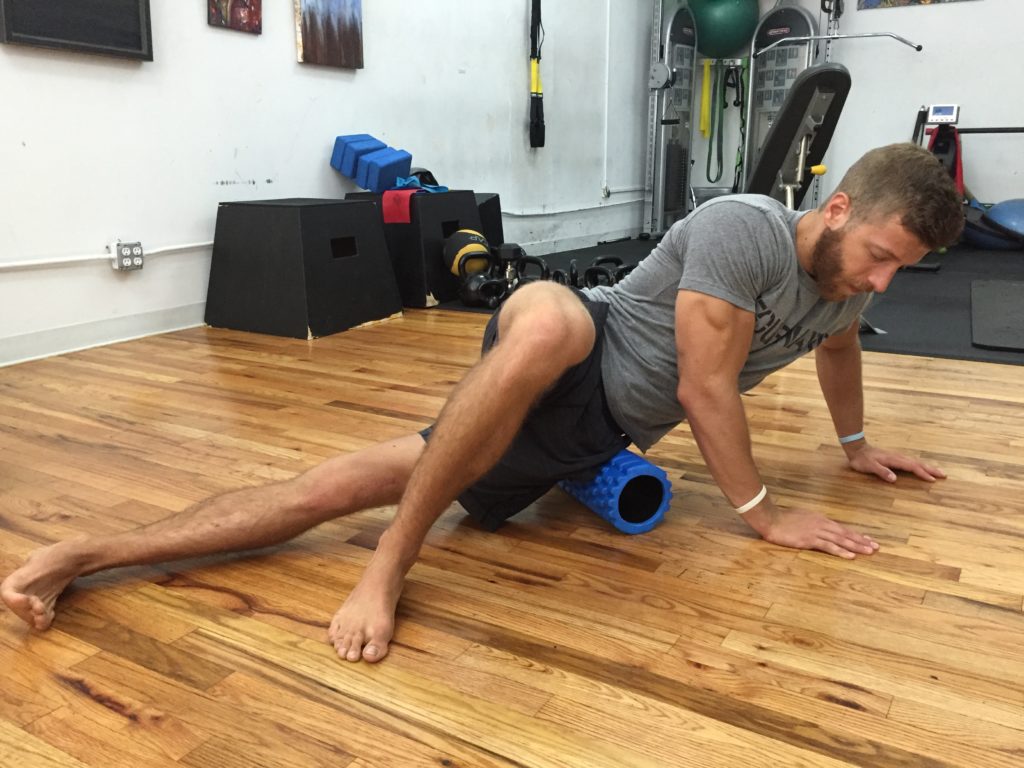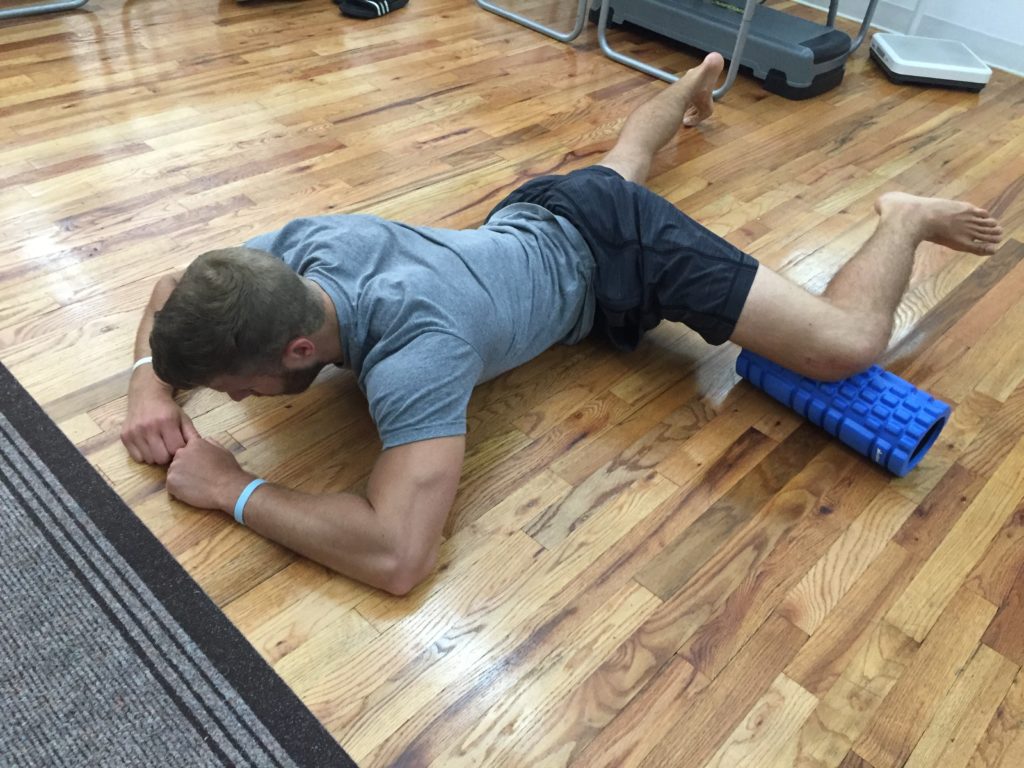The glutes can be a stubborn muscle group to warm up and stimulate pre-workout. As we sit down all day, or neglect this area of the body for prolonged periods of time, then we often hear something along the lines of “My glutes aren’t firing.” Glutes that aren’t “firing” doesn’t incur that one’s glute muscles don’t work at all, but that they’re not working properly and efficiently.
Active and strong glutes are a huge key to a strength athlete’s success when squatting and performing pulling movements. To learn a little more about foam rolling the glutes, we reached out to Matt Moskowitz, Head of Training at Hell’s Kitchen Wellness, to learn about his go-to movements for this area of the body. Check out the video below for a full glute sequence and the descriptive text below covering each step.
Note: All motions shown are for informational purposes only. The information in this article and video is not meant to prevent or cure any disease or injury. It’s always a good idea to consult with a medical professional or trainer before attempting any new training methodology. If you experience any sharp pain while foam rolling or exercising, discontinue movements immediately.
[Learn everything there’s to know about foam rolling with our in-depth guide.]
Understanding the Glutes
The glutes are the prime move in hip extension, which is a huge key to powerful pulling movements and squats. Ensuring these muscles are prepped and ready for activity is one of the main keys for avoiding displacement of stress in other areas while lifting, such as the knees. Below are five of the main lower body muscles this foam rolling sequence will be targeting.
- Gluteus Maximus
- Gluteus Medius
- Gluteus Minimus
- Tensor Fascia Latae
- Piriformis
1. Lateral Glute Roll
To begin the sequence, an athlete will sit on top of a foam roller, as if they’re sitting on a log. The athlete will sit with a tall healthy posture with their feet planted on the floor in front of them.
[Ready to get rolling? Check out our special deal on the BarBend 2-in-1 Foam Roller today!]

Then, the athlete will gently roll from side to side in a controlled fashion, gently pressing into the edges of the glutes. The goal is to roll a few inches from side to side pressing into the edges of the glutes around the tailbone. Roll from side to side for 30 strokes.
2. IT Band Long Roll
After hitting the edges of the glutes, then the athlete will position themselves at an angle on the foam roller so the IT band is making contact. The IT band spans from the upper trochanter (bony hip landmark) to the lateral knee.

Athletes will aim to make 9-10 inch strokes targeting the IT band with an average amount of pressure. Moskowitz recommends applying a fair amount of pressure on the band, but not to the point of discomfort to avoid an athlete’s body resisting the movement. The athlete will perform this movement for 30 strokes.
3. Circular Glute Twister
The third movement will have an athlete seated on the foam roller with their weight pressing into one side. As an athlete finds their point of balance, then they’ll begin to press their weight into the roller and move in a circular fashion.

Moskowitz states the goal of this movement is to pull the fibers away from their insertion point to create a gluteal stretch. He also mentioned, the glutes are different in the sense that they lie laterally on the body, so this movement is beneficial when stretching deep into a tight glute. The athlete will perform this circular motion for roughly 30 circles.
4. Piriformis Extension
The next movement will target the deep lateral flowing muscle the piriformis. An athlete will place one of the legs on a foam roller with their thigh running parallel with the roller. Then, the athlete will extend the offset leg straight back and gently lower the pelvis and upper body to the floor.

Once the athlete has gently lowered themselves to the floor, then they’ll work to press the pelvis into the floor and open the hips. Moskowitz says to hold this stretch for 30-seconds, but to also pay attention to any guarding, or cramping of the glute. In the case of glute guarding, then Moskowitz advises to lessen the stretch, or hold the body higher.
5. Hamstring Extension
The final movement is used to target and stretch the hamstring. Athlete will sit on the floor with the foam roller under their ankle, or calve. Once seated, the athlete will slowly reach toward the toes, while keeping the legs straight to provide a stretch on the hamstrings.

An athlete should work to keep their chest tall and to reach with their belly to provide their body with a bigger stretch. The athlete holds this position for 30-seconds.